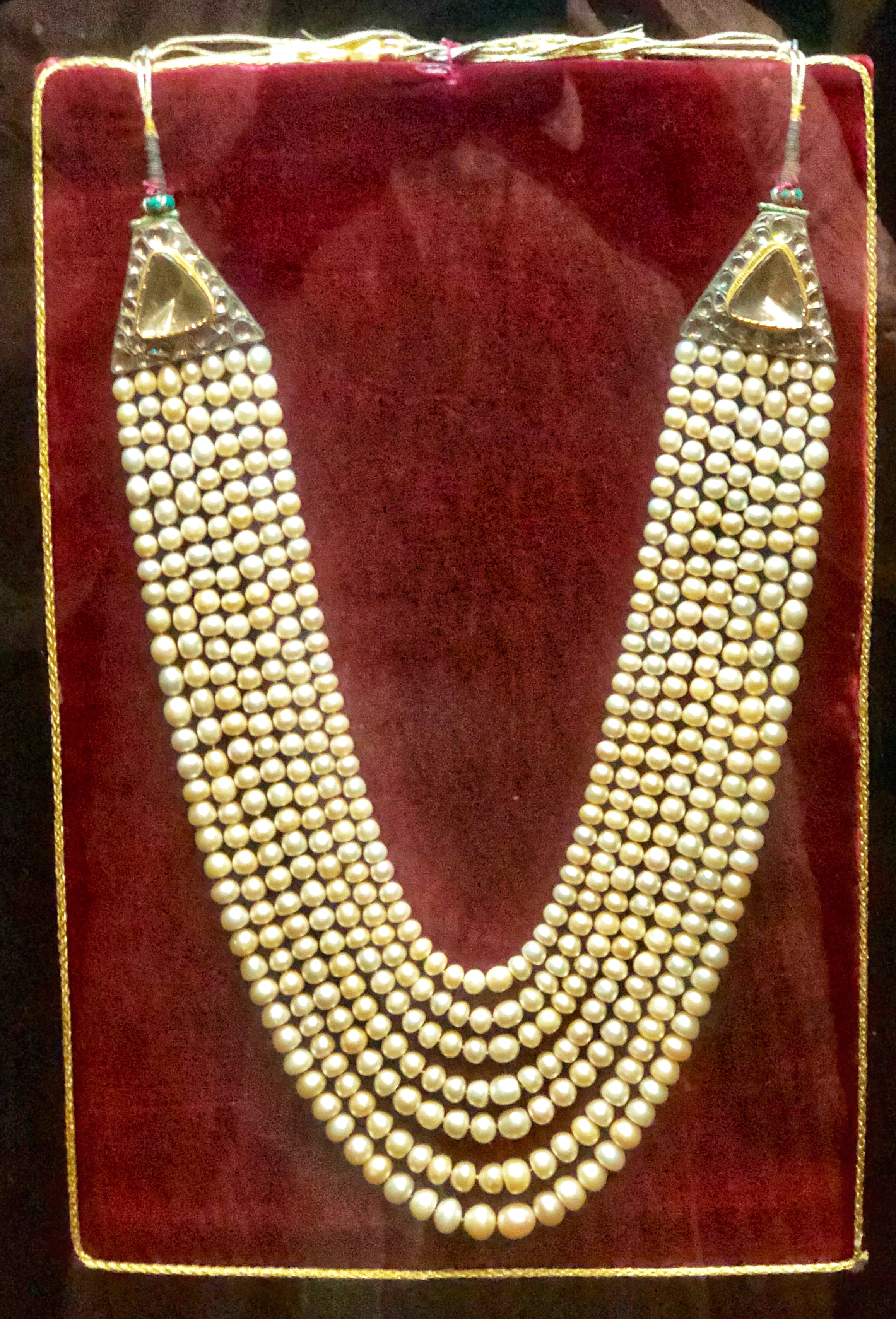|
Satlada
Satlada is a seven stringed pearl necklace of Indian origin. It traditionally has 465 pearls embedded in it. It can also be set with emeralds, diamonds and rubies. Some of the pearls are so large they look like small eggs, or outsized peas. Formerly mainly used in royal families, it is today often chosen as wedding jewelry. See also * Jewels of The Nizams The Jewels of the Nizams of Hyderabad State are among the largest and most expensive collection of jewels in present-day India. The jewels belonged to the Nizams. After the annexation of their kingdom by Union of India, the Nizam and his heir ... * Jacob Diamond * Darya-e Nur References Necklaces {{Fashion-stub ... [...More Info...] [...Related Items...] OR: [Wikipedia] [Google] [Baidu] |
Satlada
Satlada is a seven stringed pearl necklace of Indian origin. It traditionally has 465 pearls embedded in it. It can also be set with emeralds, diamonds and rubies. Some of the pearls are so large they look like small eggs, or outsized peas. Formerly mainly used in royal families, it is today often chosen as wedding jewelry. See also * Jewels of The Nizams The Jewels of the Nizams of Hyderabad State are among the largest and most expensive collection of jewels in present-day India. The jewels belonged to the Nizams. After the annexation of their kingdom by Union of India, the Nizam and his heir ... * Jacob Diamond * Darya-e Nur References Necklaces {{Fashion-stub ... [...More Info...] [...Related Items...] OR: [Wikipedia] [Google] [Baidu] |
Jewels Of The Nizams
The Jewels of the Nizams of Hyderabad State are among the largest and most expensive collection of jewels in present-day India. The jewels belonged to the Nizams. After the annexation of their kingdom by Union of India, the Nizam and his heirs were barred by the Indian government from taking the collection, claiming that it was a national treasure. After much litigation, the diamond was purchased by the Government of India from the Nizam's trust for an estimated $13 million in 1995, along with other jewels of the Nizams, and is held at the Reserve Bank of India vaults in Mumbai. Once the Nizams' state regalia, the ornaments date from the early 18th century to the early 20th century. Crafted in gold and silver, with many embellished with enamelling, the jewels are set with gems including Colombian emeralds, diamonds from the Kollur Diamond Mine in Guntur district and the diamond mine in Krishna district (now Andhra Rayalaseema Diamond mines group), Burmese rubies and spinels, ... [...More Info...] [...Related Items...] OR: [Wikipedia] [Google] [Baidu] |
TheGuardian
''The Guardian'' is a British daily newspaper. It was founded in 1821 as ''The Manchester Guardian'', and changed its name in 1959. Along with its sister papers ''The Observer'' and ''The Guardian Weekly'', ''The Guardian'' is part of the Guardian Media Group, owned by the Scott Trust Limited, Scott Trust. The trust was created in 1936 to "secure the financial and editorial independence of ''The Guardian'' in perpetuity and to safeguard the journalistic freedom and liberal values of ''The Guardian'' free from commercial or political interference". The trust was converted into a limited company in 2008, with a constitution written so as to maintain for ''The Guardian'' the same protections as were built into the structure of the Scott Trust by its creators. Profits are reinvested in journalism rather than distributed to owners or shareholders. It is considered a newspaper of record in the UK. The editor-in-chief Katharine Viner succeeded Alan Rusbridger in 2015. Since 2018, th ... [...More Info...] [...Related Items...] OR: [Wikipedia] [Google] [Baidu] |
Jacob Diamond
The Jacob Diamond, also known as the Imperial or Victoria Diamond, is a colorless diamond from South Africa (or from the Golconda mines) ranked as the fifth-biggest polished diamond in the world. The last nizam of the Hyderabad State, Mir Osman Ali Khan, found the diamond in the toe of the shoe of his father (Mahboob Ali Khan) at Chowmahalla Palace and used it as a paper weight for a long time. It was bought by the government of India for an estimated $13 million in 1995. It is cut in a rectangular cushion-cut, with 58 facets, and measures long, wide and deep. The diamond weighs 184.75 carats (36.90 g). Currently, it is kept at the Reserve Bank of India vaults in Mumbai. As part of the Nizam's jewellery exhibition in 2001 and 2007, the Jacob Diamond was a major attraction at Salar Jung Museum, Hyderabad. Unlike the famous Koh-i-Noor, the Jacob Diamond has changed hands only twice in the history of its existence and has not been associated with violence. History Before it wa ... [...More Info...] [...Related Items...] OR: [Wikipedia] [Google] [Baidu] |
Darya-ye Noor
The Daria-i-Noor ( fa, , lit=Sea of light), also spelled ''Darya-ye Noor'', is one of the largest cut diamonds in the world, weighing an estimated 182 carats (36 g). Its colour, pale pink, is one of the rarest to be found in diamonds. The diamond is currently in the Iranian Crown Jewels collection of the Central Bank of Iran in Tehran. Dimensions It is and weighs around 182 metric carats. It is the world's largest known pink diamond. History This diamond, as it is also presumed for the Koh-i-Noor, was mined in Kollur mine in Andhra Pradesh, India. It was originally owned by the Kakatiya dynasty, later it was possessed by the Khalji dynasty of the Delhi Sultanate and to Mughal emperors. It was part of Shah Jahan's Peacock Throne. In 1739, Nader Shah of Iran invaded Northern India, occupied Delhi. As payment for returning the crown of India to the Mughal emperor, Muhammad Shah, he took possession of the entire fabled treasury of the Mughals, including the ''Daria-i-Noo ... [...More Info...] [...Related Items...] OR: [Wikipedia] [Google] [Baidu] |



